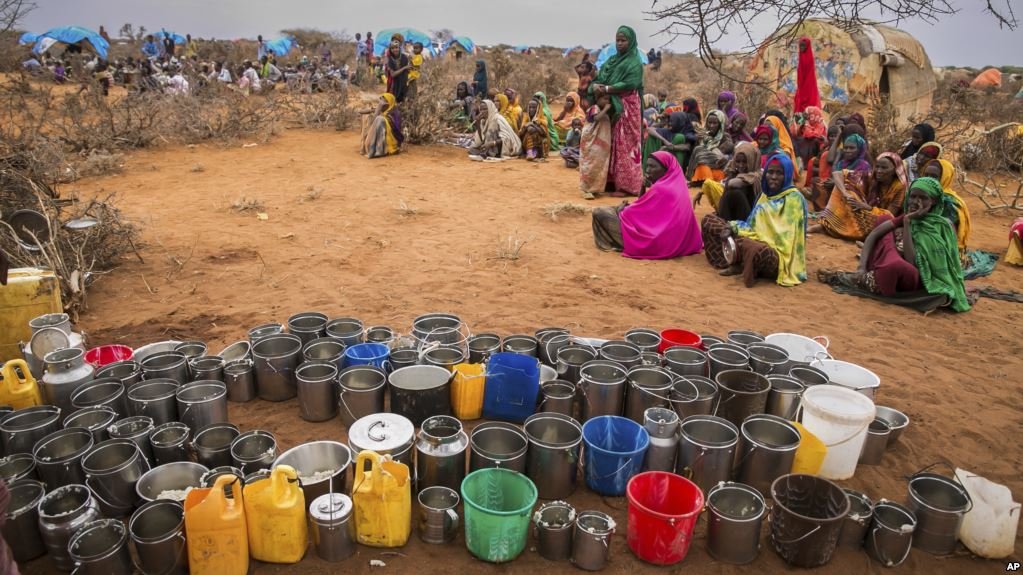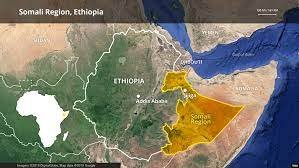By Somali Regional State Public Interest Watchdog
In the dusty outskirts of Jigjiga, the capital of Ethiopia’s Somali Region, Amina Hassan queues for hours under the blistering sun, clutching empty jerrycans. The lone functional well in her neighborhood, overtaxed by drought and mismanagement, dispenses murky water twice a week. “My children drink this and get sick, but what choice do we have?” she says. A kilometer away, behind high walls, government officials receive daily water deliveries by tanker trucks—a luxury funded by public coffers. This stark divide epitomizes the Somali Region’s descent into chaos under a system of imposed leadership, systemic corruption, and federal neglect.
Once envisioned as a semi-autonomous region under Ethiopia’s ethnic federalism, the Somali Region has instead become a cautionary tale of exploitation. Its 8 million people endure famine, clan warfare, and encroaching extremism while political elites in Addis Ababa and regional bureaus loot resources with impunity. At the center of this crisis is President Mustafe M. Omar, a leader installed not by Somalis but by federal power brokers who profit from the region’s crises.
Imposed Leaders
The Somali Region’s hopes for self-determination buckled in 2018 when Mustafe, a little-known technocrat, was appointed as president following the ouster of Abdi Iley, an autocrat whose regime imprisoned and tortured thousands in the infamous “Jail Ogaden.” Abdi’s removal, orchestrated by Prime Minister Abiy Ahmed’s reformist government, initially sparked optimism. But instead of democratic elections, Addis Ababa anointed Mustafe—a leader with no popular mandate and no vision beyond obedience to his patrons.
“Mustafe was never ours,” says Farah Aden, a civil society organizer in Jigjiga. “He was chosen because he wouldn’t challenge Addis Ababa’s agenda.” That agenda, shaped by Ethiopia’s shifting power dynamics, has seen the Somali Region transition from Tigrayan domination under the TPLF to Amhara and Oromo influence under Abiy’s Prosperity Party.
Federal intermediaries, like Amhara Prosperity Party figure Binalf Andualem, frequently visited Jigjiga early in Mustafe’s tenure to “oversee” governance, according to leaked diplomatic cables.
Mustafe’s loyalty to federal elites is an open secret. In private conversations recounted by aides, he reportedly dismissed Oromo allies as mercenaries—“They’re only after money; whoever pays more, they’ll sell you”—while praising Amhara partners as “reliable protectors.” Dr. Hussein Kassim, his chief of staff, echoed this in a 2022 meeting, accusing Oromo officials of caring only about cash: “Naa Kenni (‘Give me’) is their motto. They don’t care if the region burns.”
Systemic Corruption
Under Abdi Iley, corruption was centralized, with bribes funneled upward to Tigrayan generals who maintained him on powers. Under Mustafe, graft has metastasized into a decentralized free-for-all. “Every bureau head acts like a warlord now,” says a former finance official in Kebri Dehar. “They steal their budgets, pay off Mustafe’s office, and face zero consequences.”

Saturday, Jan. 28, 2017 (AP Photo/ Mulugeta Ayene )
The 1.2 billion birr security budget scandal, first exposed in 2021, illustrates this decay. During a cabinet meeting in Gode, Mustafe offhandedly noted the funds had vanished, allegedly spent on the Afar conflict. No receipts were produced, no audits conducted. When pressed, Dr. Hussein Kassim—then security chief—claimed the money “might have been used for Afar war.” The council swiftly voted to replenish the deficit by siphoning development funds.
“That meeting was a farce,” recalls an attendee who spoke anonymously. “We all knew the money went to Dubai real estate.” Investigators later traced $4.2 million from the security budget to properties in Nairobi and Ankara linked to Mustafe’s associates. Meanwhile, the region’s security forces languish: police in Afdheer zone complain of unpaid salaries and broken vehicles, while Al-Shabaab infiltrates border villages.
Corruption extends to humanitarian aid. In 2022, 200 million birr earmarked for drought relief was diverted to the Prosperity Party’s election campaign.
“They printed T-shirts and held rallies while people starved,” says an NGO worker in Dollo Zone. The theft worsened a catastrophe: 3.5 million livestock died in 18 months, and UNICEF reports 480,000 children face acute malnutrition.
Power Retention
Mustafe’s survival hinges on three federal priorities:
- Distracting Rivals: Oromo officials, including Prosperity Party heavyweights, exploit border disputes between Somali and Oromia regions to inflame ethnic tensions. This keeps Oromo nationalists preoccupied with territorial claims rather than federal reforms.
- Territorial Concessions: Mustafe has quietly ceded control of Dire Dawa and Moyale—historically Somali-majority towns—to Oromia, enabling Abiy to appease Oromo factions.
- Financial Extraction: The Somali Region’s customs revenue, estimated at $300 million annually from the Wajale border crossing, is funneled to Oromo and Amhara elites.
“Mustafe is a puppet, but a profitable one,” says an Addis Ababa-based economist. “He keeps the cash flowing and the Somalis divided.” Federal officials privately admit he is unfit for office—a 2021 intelligence report described him as “erratic” and “easily manipulated”—but his weakness is an asset.
Fueled Conflicts
In 2021, Mustafe reversed Abdi Iley’s decision to cede Adaytu, Undufo, and Garba-Issa—Somali-majority kebeles—to the Afar Region, reigniting a dormant conflict. The move ignored the Afar’s strategic importance: their control of the Djibouti corridor made them critical allies during the Tigray War. When fighting erupted, Ethiopian National Defense Forces (ENDF) sided with the Afar, shelling Somali villages. Over 50,000 Somalis were displaced, and the kebeles were razed.
“The government watched us die,” says Halima Mohamud, who lost her home in Adaytu. “They wanted the Afar to punish us.” The conflict also enriched officials: $40 million in emergency “security” funds vanished, much of it laundered through foreign banks, an insider alleges.
Intra-clan violence has surged under similar neglect. In 2025, clashes between the Arab and Reer Isaq clans in Dacwaley killed 400. Mustafe’s special police force, dominated by his own clan, fueled the bloodshed by arming one side. “They turned a land dispute into a massacre,” says elder Yusuf Abdi.
Read more: Plundered and Forgotten: Somali Region’s Cycle of Exploitation
Somali Regional State Public Interest Watchdog
Email: srspublicinterestwatchdog@gmail.com


Leave a Reply